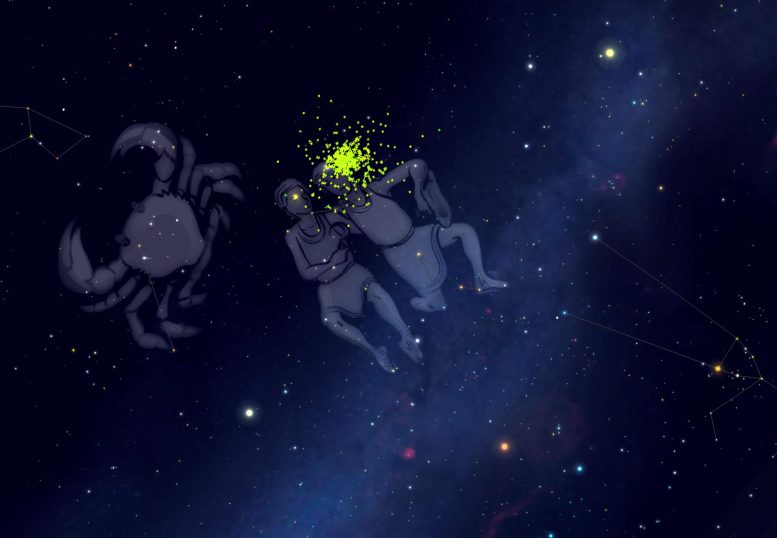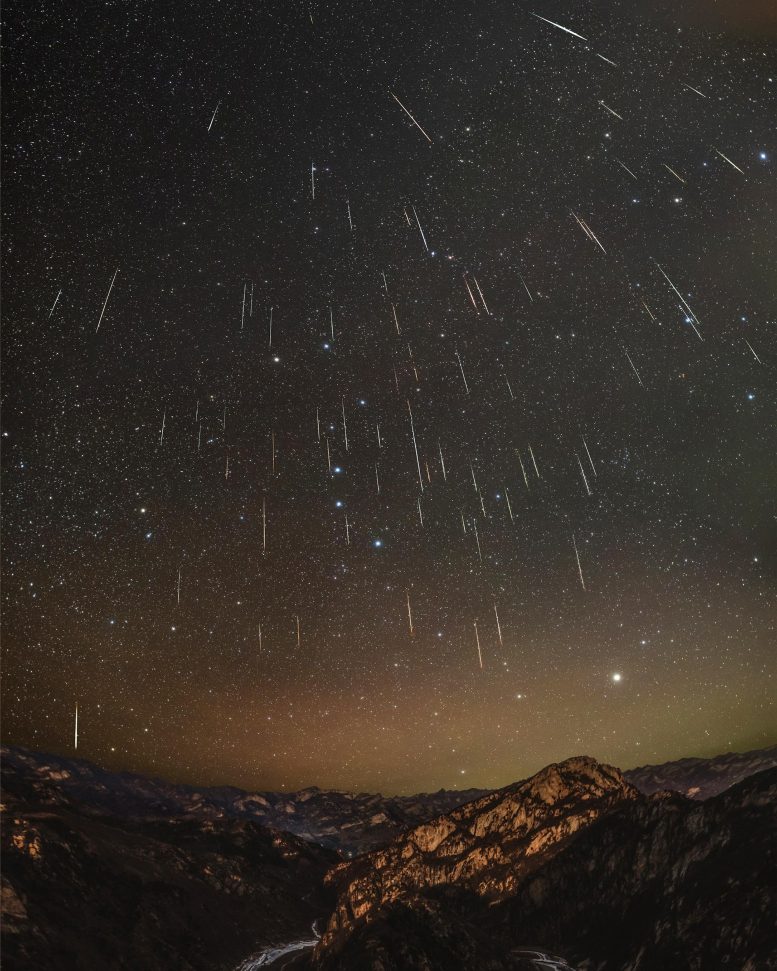Don’t Miss the Geminid Meteor Shower – And Check Out NASA’s Live Meteor Camera
The Geminids are caused by debris from a celestial object known as 3200 Phaethon, whose origin is the subject of some debate. Some astronomers consider it to be an extinct comet, based on observations showing some small amount of material leaving Phaethon’s surface. Others argue that it has to be an asteroid because of its orbit and its similarity to the main-belt asteroid Pallas.
Whatever the nature of Phaethon, observations show that the Geminids are denser than meteors belonging to other showers, enabling them to get as low as 29 miles above Earth’s surface before burning up. Meteors belonging to other showers, like the Perseids, burn up much higher.
The Geminids can be seen by most of the world. Yet, it is best viewed by observers in the Northern Hemisphere. As you enter the Southern Hemisphere and move towards the South Pole, the altitude of the Geminid radiant – the celestial point in the sky where the Geminid meteors appear to originate – gets lower and lower above the horizon. Thus, observers in these locations see fewer Geminids than their northern counterparts.

All meteors appear to come from the same place in the sky, which is called the radiant. The Geminids appear to radiate from a point in the constellation Gemini, hence the name “Geminids.” The graphic shows the radiants of 388 meteors with speeds of 35 km/s observed by the NASA Fireball Network in December 2020. All the radiants are in Gemini, which means they belong to the Geminid shower. Credit: NASA
Besides the weather, the phase of the Moon is a major factor in determining whether a meteor shower will have good rates during any given year. This is because the moonlight “washes out” the fainter meteors, resulting in sky watchers seeing the fewer bright ones. This year, the Moon will be almost 80% full at the peak of the Geminids, which isn’t ideal for our highly regarded meteor shower. Nevertheless, that bright Moon is expected to set around 2:00 a.m. wherever you are located, leaving a couple of hours for meteor watching until twilight.
“Rich in green-colored fireballs, the Geminids are the only shower I will brave cold December nights to see,” said Bill Cooke, lead for NASA Meteor Watch Facebook page.
Meteor videos recorded by the All Sky Fireball Network are also available each morning to identify Geminids in these videos – just look for events labeled “GEM.”
Learn more about the Geminids below:
Why are they…
Read More: Don’t Miss the Geminid Meteor Shower – And Check Out NASA’s Live Meteor Camera

